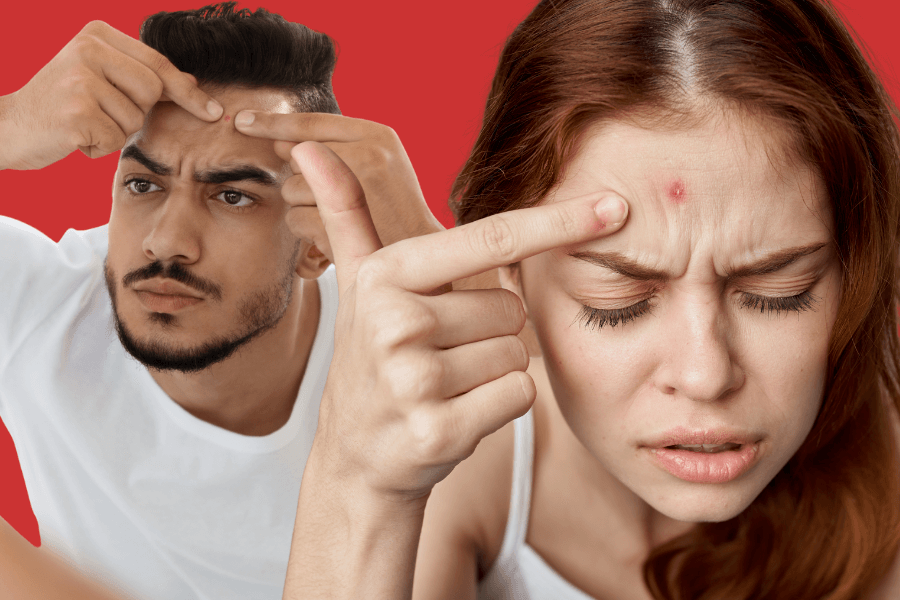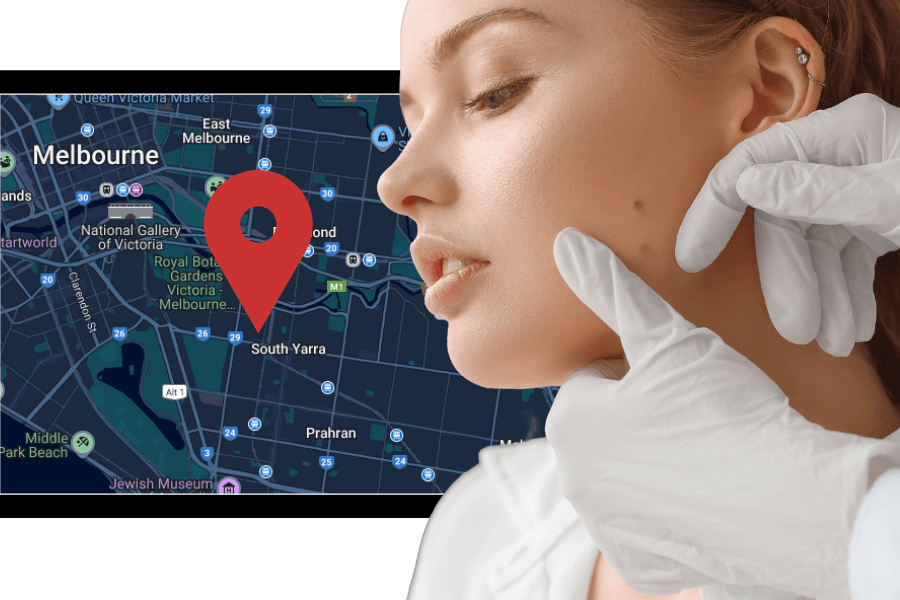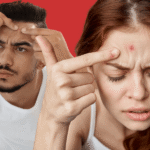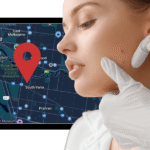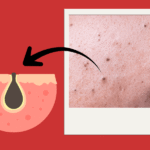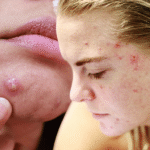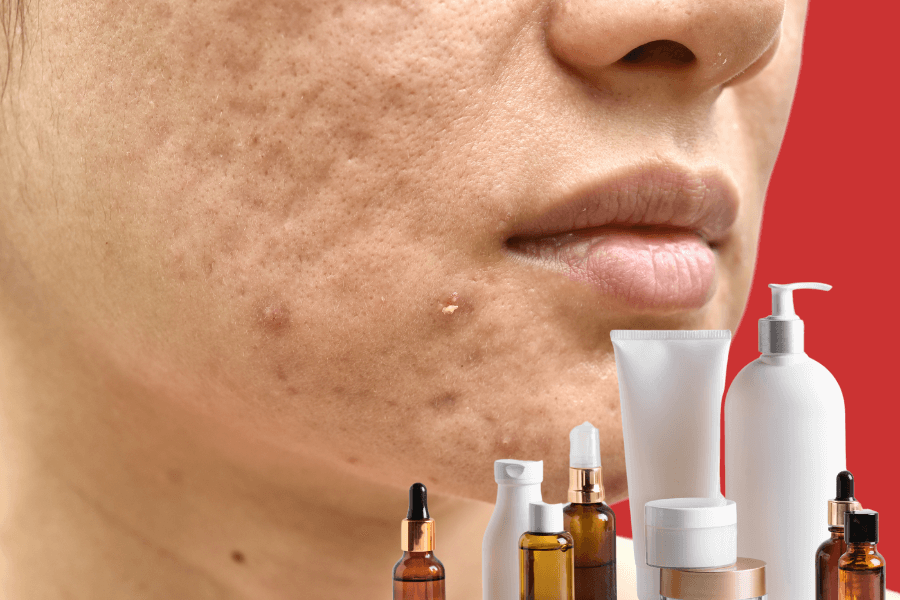
Your acne is finally gone. But wait – what are these marks still doing here? Pimple scars can feel like cruel punishment after you’ve already won the acne battle.
Don’t panic though. These marks aren’t permanent tattoos. Most can fade or disappear completely with the right help.
Why your skin makes scars
Your body is trying to help when it makes scars. Really. When deep pimples damage your skin, your body rushes to fix things. It sends collagen to patch up the mess.
Sometimes this repair job goes wrong. Your body might use too much collagen. This creates bumpy, raised scars. Or it might not use enough. This leaves dents and holes.
Some people get lucky. Their skin heals perfectly smooth. Others aren’t so fortunate. Genetics play a big part here.
Things that make scars worse:
- Picking at pimples
- Really deep, angry acne
- Having family members with scars
- Dark skin (for certain scar types)
Not treating acne quickly
Four main types of pimple scars
Ice pick scars
Picture tiny holes poked into your skin. That’s what ice pick scars look like. They’re narrow but go deep. These are the trickiest to fix because they tunnel so far down.
You’ll see them mostly on cheeks. From far away, they make skin look rough and bumpy.
Boxcar scars
These look like small boxes pressed into your skin. They’re wider than ice pick scars but not as deep. The edges are sharp and well-defined.
Boxcar scars usually show up on cheeks and temples. They respond better to treatment than ice pick scars.
Rolling scars
These create waves in your skin. Instead of sharp edges, they roll and dip like tiny hills. This happens when scar tissue forms under your skin and pulls down.
Rolling scars make your skin texture uneven. They’re common but treatable.
Raised scars
Unlike the others, these stick up from your skin. They feel thick and bumpy when you touch them. Your finger catches on to them.
People with darker skin get these more often. They love showing up on jawlines, chests, and backs.
Dark spots (Not really scars)
These flat, dark marks aren’t true scars. They’re called post-inflammatory hyperpigmentation or PIH. Your skin makes extra pigment after pimples heal.
PIH is super common with darker skin tones. The good news? These usually fade on their own over time.
What causes each type?
- Deep inflammation creates ice pick and boxcar scars. When pimples go really deep, they destroy too much tissue for perfect healing.
- Scar bands under the skin cause rolling scars. These bands connect to the surface and pull it down.
- Too much healing response makes raised scars. Your body goes overboard with collagen production.
- Extra pigment production after inflammation causes dark spots.
Treatment options that work
For ice pick scars
- TCA (trichloroacetic acid) CROSS (chemical reconstruction of skin scars): Strong acid goes directly into each scar hole. This destroys old scar tissue so new skin can form.
- Punch tools: A tiny instrument cuts out the scar completely. Then skin gets stitched back together.
- Lasers: Fractional lasers help but usually need many sessions.
For boxcar scars
- Chemical peels: Medium-strength peels remove damaged skin layers. New, smoother skin grows back.
- Laser treatments: CO2 lasers vaporise damaged tissue very precisely.
- Fillers: Hyaluronic acid injections plump up the dents temporarily.
For rolling scars
- Subcision: A needle breaks scar bands under your skin. This releases the pulling effect.
- Microneedling: Tiny needles create controlled wounds. Your skin heals by making new collagen.
- Heat treatments: Radiofrequency energy stimulates deep collagen production.
For raised scars
- Steroid shots: These flatten bumpy scars by reducing inflammation.
- Silicone patches: Daily wear softens and flattens scars gradually.
- Freezing: Cryotherapy breaks down excess scar tissue.
For dark spots
- Bleaching creams: Hydroquinone lightens dark patches safely.
- Vitamin C: This antioxidant fades spots and protects skin.
- Gentle peels: Light chemical peels remove pigmented layers.
- Retinoids: These speed up cell turnover to fade spots faster.
Home treatments vs professional help
Try at home first:
- Drugstore chemical peels
- Vitamin C and retinoid creams
- Silicone scar patches
- Home microneedling devices
See a professional for:
- Deep ice pick or boxcar scars
- Raised scars that won’t improve
- Multiple different scar types
- Scars affecting your confidence
Making your treatment plan
Week 1: Take clear photos of your scars in good light. Figure out which types you have.
Months 1-3: Start with gentle treatments. Try good skincare products consistently.
Month 4+: Add professional treatments if home care isn’t enough. Work with a skin expert.
Be realistic: Light scars might improve in 2-3 months. Deep scars can take 6-12 months or longer.
What to expect
- Timeline: Patience is everything here. Most treatments work slowly.
- Cost: DIY options cost $20-100. Professional treatments range from $200-2000 per session.
- Sessions: Most professional treatments need 3-6 visits for the best results.
- Downtime: Some treatments cause redness or peeling for a few days.
Rookie mistakes to skip
- Wanting overnight results: Skin healing takes forever. Accept this early.
- Using everything at once: Too many products can irritate skin and make scars worse.
- Forgetting sunscreen: Sun damage makes scars darker and harder to treat.
- Leaving it alone for too long: Some scars need professional help to improve.
Preventing new scars
Stop future scars before they start:
- Don’t pick at pimples (seriously, don’t)
- Treat acne early and consistently
- Use gentle products on your skin
- Wear sunscreen every single day
- See a professional for stubborn acne
What really works
Different scars need different approaches. What works amazingly for your friend might do nothing for you. That’s totally normal.
Start by figuring out your scar types. Try gentler treatments first. Don’t be stubborn about getting professional help when you need it.
Your skin is unique. The healing process takes time. But clear, smooth skin is absolutely possible with the right plan and enough patience.
Most scars can be improved significantly. Some disappear completely. You just need to find what works for your specific situation and stick with it.
Getting expert help when you need it
Sometimes you need more than just advice – you need actual treatment from people who know what they’re doing. That’s where services like Acne Express come in handy. As a trusted online acne treatment service, we understand that dealing with both active acne and leftover scars requires a proper strategy.
The best part about working with experienced providers? They can assess your specific scar types and recommend treatments that actually make sense to your situation. No more guessing games or trying random products you found online.

